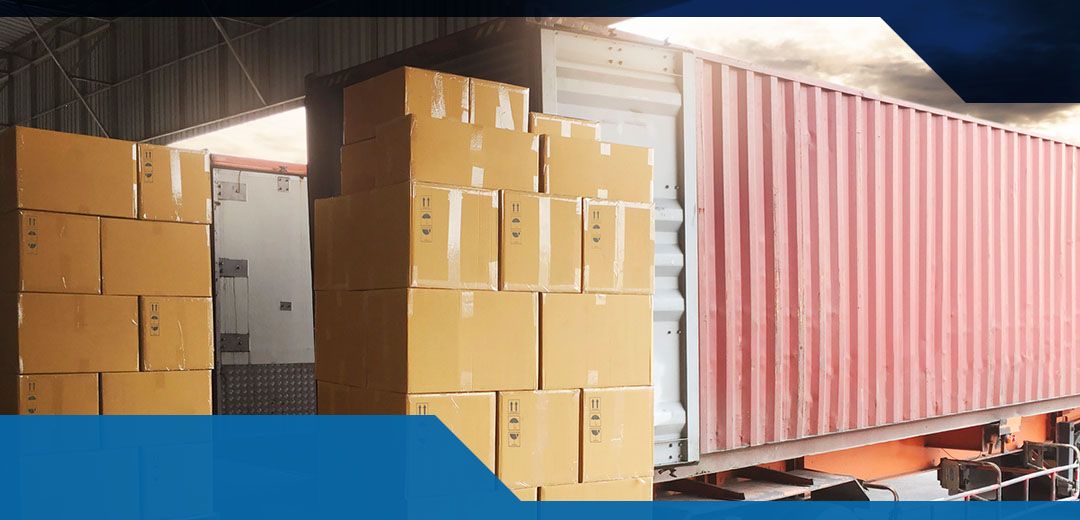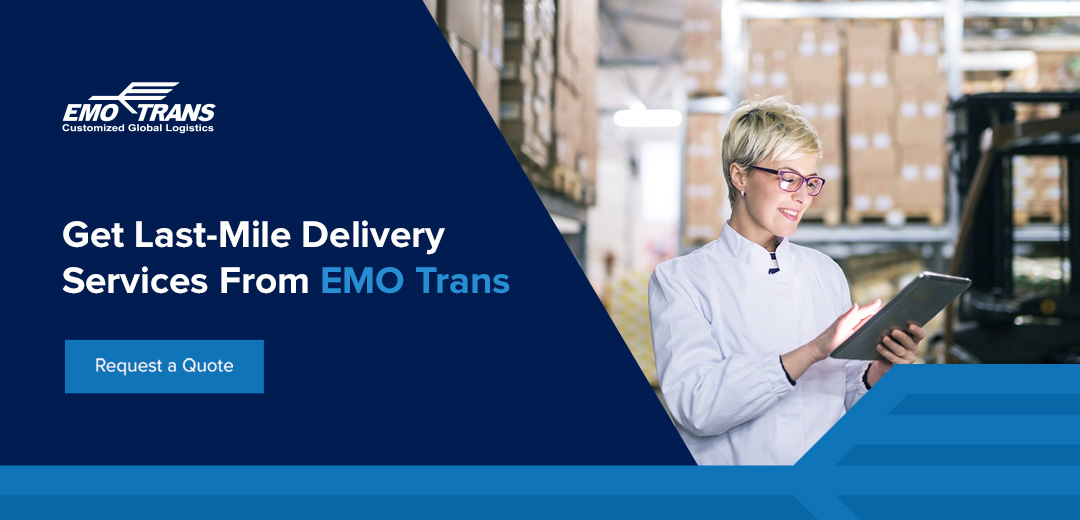
E-commerce is shifting to meet customer delivery expectations. Consumers and businesses expect faster, more flexible deliveries without added cost. That puts pressure on logistics providers as the last mile of delivery is the most critical part of fast delivery services.
If there’s unpredictable traffic or dense delivery zones, it can be hard for shippers to get their products to the right place on time. Factor in extra labor and fuel costs, and getting freight to its last stop becomes an expensive task.
If you’re looking to improve your last-mile fulfillment, you need to understand the strategy behind its success. Let’s break down last-mile delivery to help you tackle the most important part of the delivery process.
Last-Mile Delivery Explained
Last-mile delivery is the final part of package or freight delivery. It’s when your product moves from a transportation hub to its destination. Homes and businesses count down the days until they receive their package. The last mile is the most visible part of the shipping process for customers.
Freight has to land — whether by air, truck or boat — and make its way to its final shipment method before getting dropped off. Your reputation can depend on a successful last-mile delivery.
How Last-Mile Distribution Works
The last mile is the final delivery stretch for shipments, but how does that actually work? Here’s all the work that goes into a last-mile delivery:
1. Order Logistics
Before the last-mile work begins, orders arrive at their final transportation hub. Workers log the orders and sort packages for delivery. Delivery sorting is chosen based on reducing fuel costs and travel time. Drivers will transport packages to similar places with similar service levels to speed up delivery times.
2. Departure From the Final Hub
Your goods leave the warehouse after being scanned onto their trucks. Trucks are the main transportation method for last-mile deliveries since they can move freight more easily and economically to individual buildings than planes and boats.
After logging and loading, tracking is updated to let customers know their parcels are on the way.
3. Route Optimization
Carriers use routing software to create the most efficient delivery plans. Software accounts for weather, traffic and delivery windows in real time to reduce delays and fuel expenses. These solutions are essential in denser zones to avoid surprise delays and meet customer expectations.
4. Last-Mile Enroute
This is the end of the delivery process. Drivers and carriers deliver parcels to businesses, homes and designated pickup points. High-value, sensitive or dangerous goods need signatures or proof of delivery (POD) records to complete the drop-off.
5. Exception Handling
If the delivery fails, carriers will reroute or hold packages for another attempt. Deliveries might fail if the recipient is absent or the delivery driver cannot access the drop-off location.

Why Use a Last-Mile Service?
Outsourcing last-mile delivery is an excellent option for businesses. Even if you’re already involved in logistics, high delivery volumes can make the last mile a challenge. Working with dedicated last-mile support gives you access to an established network and resources for faster delivery.
Here’s how a last-mile service can benefit your operation:
- Faster delivery times: Last-mile providers streamline the delivery handoff. They have strategically placed locations and routing tools, which reduce delivery times. Their existing infrastructure gives them a speed that’s hard for other businesses to match.
- Improved customer experience: Customers expect visibility and reliability. Partnering with a last-mile service means access to detailed portals, real-time delivery updates and tighter delivery windows. Customers will work with you again if they can count on your deliveries.
- Scalable operations: Third Party Logistics (3PL) has the ability to scale to your needs. 3PL last-mile providers can quickly scale for seasonal demand or international consolidations.
- Increased efficiency: Managing a last-mile fleet can be expensive and labor-intensive. A dedicated provider will handle these unique challenges so your teams can focus on broader supply chain management without overextending your resources.
- Better cost control: An experienced provider will help you reduce costs. They have the vehicles, route planning and experience to get deliveries done as quickly and efficiently as possible. You’ll get professional service without driving up expenses.
Key Terms Used in Last-Mile Shipping
If you’re managing freight, logistics or customers, you need to understand last-mile delivery language. Some key terms include:
- Reverse logistics: This involves returning goods from the customer back to the seller or manufacturer. Returns might be initiated during the last mile, requiring packages to go back to the shipper.
- Proof of delivery (POD): Shipments might need proof of delivery before drivers will drop them off. These documents, photos or digital signatures confirm the package has arrived.
- Full truckload and less-than-truckload (FTL/LTL): FTL and LTL are terms for the amount of space your shipment uses on a delivery truck. FTL shipments take up the whole truck and go directly to their destination. LTLs are combined with other shipments, so they go to a final hub for last-mile consolidation.
- Delivery window: This is the time frame within which the delivery is supposed to arrive.
- Buy online, pick up in store (BOPIS): BOPIS is a delivery alternative. Customers can skip last-mile delivery costs if they pick up in stores.
- Third-party logistics (3PL): 3PL is a company that handles your logistics services. They can do everything from packaging to delivery and customs handling, making it easy for your products to get where they need to go.
Who Offers Last-Mile Shipping?
Most 3PL companies offer last-mile delivery options. Their job is to provide you with flexible solutions so your entire delivery process is simple. Some niche last-mile providers focus only on the final mile in cities. Other companies will maintain their own fleets to handle their supply chain.
Whether you’re looking for medical equipment delivery or tailored automotive logistics solutions, an expert logistics partner can help with last-mile delivery.
Get Last-Mile Delivery Services From EMO Trans
Navigating global logistics and ensuring an on-time last-mile delivery is a complex task. EMO Trans can help you deliver packages with precision and visibility around the world. We offer real time Track & Trace (Quick Track) via the EMO Trans Portal, letting you see exactly where your freight is.
Our expert team can help you manage freight from air cargo to ocean freight and beyond, protecting your reputation and products. With over 50 years of global logistics experience and ISO 9001:2015 certification, you can count on EMO Trans to deliver effective, customized supply chain solutions. We tailor quotes to your exact requirements.
Need flexible solutions? Our specialized project logistics team can help. Request your quote online and discover what success by performance really means!

